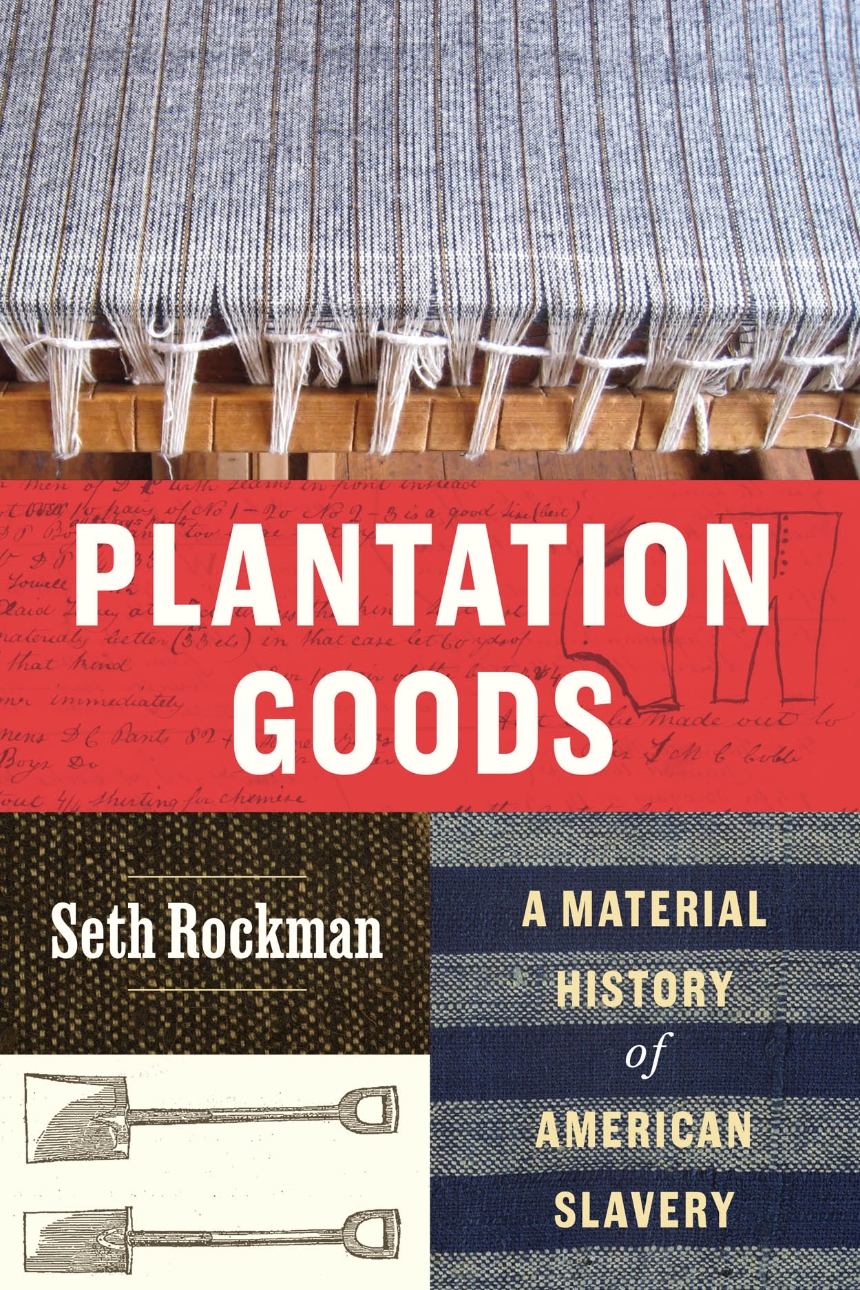Plantation Goods
A Material History of American Slavery
Plantation Goods
A Material History of American Slavery
The industrializing North and the agricultural South—that’s how we have been taught to think about the United States in the early nineteenth century. But in doing so, we overlook the economic ties that held the nation together before the Civil War. We miss slavery’s long reach into small New England communities, just as we fail to see the role of Northern manufacturing in shaping the terrain of human bondage in the South. Using plantation goods—the shirts, hats, hoes, shovels, shoes, axes, and whips made in the North for use in the South—historian Seth Rockman locates the biggest stories in American history in the everyday objects that stitched together the lives and livelihoods of Americans—white and Black, male and female, enslaved and free—across an expanding nation.
By following the stories of material objects, such as shoes made by Massachusetts farm women that found their way to the feet of a Mississippi slave, Rockman reveals a national economy organized by slavery—a slavery that outsourced the production of its supplies to the North, and a North that outsourced its slavery to the South. Melding business and labor history through powerful storytelling, Plantation Goods brings northern industrialists, southern slaveholders, enslaved field hands, and paid factory laborers into the same picture. In one part of the country, entrepreneurs envisioned fortunes to be made from “planter’s hoes” and rural women spent their days weaving “negro cloth” and assembling “slave brogans.” In another, enslaved people actively consumed textiles and tools imported from the North to contest their bondage. In between, merchants, marketers, storekeepers, and debt collectors laid claim to the profits of a thriving interregional trade.
Examining producers and consumers linked in economic and moral relationships across great geographic and political distances, Plantation Goods explores how people in the nineteenth century thought about complicity with slavery while showing how slavery structured life nationwide and established a modern world of entrepreneurship and exploitation. Rockman brings together lines of American history that have for too long been told separately, as slavery and capitalism converge in something as deceptively ordinary as a humble pair of shoes.
Reviews
Table of Contents
Introduction: A Captive Market
Part One: Production
Chapter 1: Plantation Entrepreneurs
Chapter 2: Masters of Negro Cloth
Interlude 1: The Russet Brogan
Chapter 3: Plantation Labor Outsourced
Chapter 4: Wage Slaves
Part Two: Distribution
Chapter 5: The Middlemen
Interlude 2: The Negro Cloth Sample
Chapter 6: Racial Knowledge for Sale
Part Three: Consumption
Chapter 7: The Fantasies of Provisioning
Chapter 8: Commercial Emancipation
Interlude 3: The Newark Whip
Chapter 9: Complaints and Compliance
Chapter 10: Coerced Consumers
Conclusion: Four Million Liberated Consumers
Acknowledgments
Notes
Index
Awards
American Historical Association: Albert J. Beveridge Award
Won
McGill University: Cundill Prize
Longlist
Business History Conference: Hagley Prize
Finalist
Nieman Foundation & Columbia Journalism: Mark Lynton History Prize
Finalist
Cornell Univiversity ILR and Labor and Working Class Historical Association: Philip Taft Labor History Award
Won
Pulitzer Prize
Finalist
Center for Humanities Research, Texas A&M: Susanne M. Glasscock Humanities Book Prize for Interdisciplinary Scholarship
Finalist
